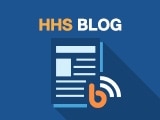Year in Review
The Day My New Journey Began
September 5, 2017
It’s hard to believe that one year ago I was given the honor of a lifetime, and was sworn in as the 20th Surgeon General of the United States. Throughout my life, I’ve felt compelled to serve those around me, first as a practicing physician, and then as the Indiana health Commissioner, where I worked to protect and improve the health of millions across the state. When presented with the opportunity to positively impact the health of the entire country, I was immensely humbled, but eager to serve the American people as best I could.
Responding to Disaster
In October 2017, only a month into my new position, I visited both Puerto Rico and the U.S. Virgin Islands (USVI) following the major damage caused by both Hurricane Irma and Hurricane Maria. These hurricanes left both Puerto Rico and the USVI without clean water or an adequate power supply. Many were left homeless. Though devastated, the residents of these islands were resilient, optimistic, and an immense source of pride as US citizens. In a perspective piece that was featured in Public Health Reports, I complimented both Puerto Rico and the USVI for their ability to show Resistencia—resilience in the face of formidable hardships. I was also extremely proud of the men and women of my own service, the U.S. Public Health Service Commissioned Corps, for responding admirably to the needs of those affected by the series of category five hurricanes.
Serving as a Uniformed Officer
As Surgeon General, I have the honor to serve as a member of the United States Public Health Service Commissioned Corps and the Nation’s Doctor. The Commissioned Corps is one of the nation’s seven uniformed services with a history that dates back over two centuries. It is an elite team of nearly 6,500 full-time, highly qualified public health professionals who are committed to providing essential health care services to underserved and vulnerable populations.
In June, I attended the USPHS Scientific & Training Symposium in Dallas, Texas, where I met more than 1,100 officers who were committed to protecting the nation’s health. I also had the privilege of meeting a remarkable individual; one may say a visionary— the late Mr. Stan Brock – who is the founder of the Remote Area Medical (RAM) Volunteer Corps, a public non-profit organization that provides quality health care to underserved populations. I was extremely proud to see our officers working with RAM in Oklahoma to provide vision, dental, and medical services to children, adults, and families who do not have access to affordable healthcare. We are proud to continue to work with local, state, tribal and non-governmental organizations to advance the health of our nation.
Honoring our Veterans
In November, I had the great privilege of marching with the Commissioned Corps in the NYC Veterans Day parade. Despite a blistering cold wind, it was a wonderful opportunity for me to meet men and women from various uniformed services and to honor our country’s many veterans. One of the moments I will most remember was meeting Colonel Buzz Aldrin, who is enshrined in history books as part of the Apollo 11 mission. Years before his first steps on the moon, however, he served as a fighter pilot during the Korean War. We should always do our best to honor the sacrifices made by brave veterans like Colonel Aldrin, who have worked tirelessly to help keep America safe and secure for generations. Standing shoulder to shoulder with heroes and saluting the Commissioned Corps as they marched by again reminded me of the awesome opportunity – and responsibility- I have been given to serve my fellow Americans as their Surgeon General.
Naloxone Advisory
Having a brother with substance use disorder, it was crucial to me as Surgeon General that I leverage my new office to combat the Opioid Crisis raging across America. In the unfortunate context of increasing overdose deaths the past several years, I consider the Surgeon General’s Advisory on Naloxone and Opioid Overdose to be the most significant achievement of my first year as Surgeon General. Research indicates that overdose deaths decrease in communities where overdose education and naloxone are made widely available. Naloxone, which blocks the effects of opioids, can temporarily reverse the effects of an overdose, and save lives. My advisory emphasized you don’t need to be a clinician or first responder to administer naloxone. This is especially important as over half of all opioid overdoses occur in a home environment. Thanks in part to increased awareness raised by the advisory, naloxone can be obtained without a doctor’s prescription at most pharmacies throughout the country. Naloxone dispensing in the first month after the advisory increased 40% and I’m encouraged that the advisory also has sparked conversations about next steps, including effective treatment and recovery supports, and prevention.
Coming Back Home
I am still in awe that I was invited to serve as a commencement speaker at my mother’s alma mater, College of Southern Maryland (CSM), which is just around the corner from my childhood home. As a child, I watched my mother work hard to balance motherhood, our household, and her studies there. It was definitely an inspiring experience for me to be standing at that school’s podium, reiterating to its students the school’s mission, which is to help both students and the community better respond to the individual, social, and global challenges of today.
Into Alaska
Most recently, I travelled to Alaska to learn more about the successes and challenges faced by some of our citizens outside the “lower 48.” I visited several different communities, tribes and villages to highlight the importance of access to care for underserved populations. I learned about innovative models serving those who live far from major cities. This innovation is by necessity as the nearest level 1 trauma center is in Seattle, Washington. While in Kotzebue, the residents told me their distance from tertiary care in Anchorage would be like me having to go from Washington DC to Columbus Ohio. On my last day, I visited three separate and remote villages, and saw the best of Alaskan perseverance and ingenuity, coupled with some of the worst of our country’s health disparities. In some of the villages one quarter of the youth and a half of the adults use tobacco! There is so much work to do! Fortunately, my trip to Alaska allowed me to witness first-hand the critical, diverse, and life-affirming work of Commissioned Corps officers serving these areas. It is incredibly important that the health equity issues all Americans face, be they rural, minority, Veteran, disabled, or in any other underserved population, be brought to light and addressed. I’m glad for the opportunity to be that light in my travels across the Country, and I’m equally glad that Commissioned Corps officers are out there in even the most remote and austere locations addressing the health inequities that exist.
Vision for the Future
I have seen throughout my first year as Surgeon General, and throughout my career in public health and medicine, that health can’t be achieved in a silo. No single belief, discipline, religion, practice, profession, organization, political viewpoint, or group of any kind can solve our nation’s complex health problems alone. This is what led me to develop my motto “Better Health through Better Partnerships.” If we seek to be humble servant leaders and form worthwhile relationships with diverse groups, better health is sure to follow. Going into my next year, I will continue to visit various communities across the country, stressing the importance and the mutual benefits of better partnerships to address the health, economic, safety, and social issues in a neighborhood. As part of this effort, I have in the works a report on tobacco cessation, specifically in the workplace, as well as the Community Health and Economic Prosperity (CHEP) Initiative. The latter initiative is a collaboration with partners to address long-standing ills in communities and demonstrating a business/ economic imperative to improving the health and wellness of communities, with an emphasis on employer and private sector engagement. I remain excited and optimistic about our Nation’s efforts and potential to achieve a culture of health, and I am confident that great things are sure to follow. Thank you America for the opportunity to be part of this wonderful journey.
All re-posted from: Public Health Newswire
Programs to Support Refugee Self-Sufficiency
HHS Meets Some PETS: Patient-Empowering Technologies


